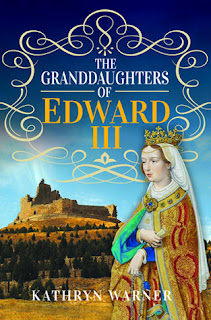September 1939. A city ruled by fear. A population brutalized by restrictions and reprisals. Amid the devastation, another hunter begins to prowl. What are a few more deaths amid scores of daily executions?
Former chief investigator Jan Kalisz lives a dangerous double life, forced to work with the occupiers as he gathers information for the fledgling Polish resistance. Even his family cannot be told his true allegiance.
When the niece of a Wehrmacht general is found terribly mutilated, Jan links the murder to other killings that are of less interest to his new overlords. Soon, he finds himself on the trail of a psychopathic killer known as The Artist. But, shunned as a Nazi collaborator, can he solve the case before another innocent girl is taken?
~ ~ ~
My initial thoughts upon immediately finishing this book were that it was:
- well written
- evocative
- engaging
- great read
- start of a thrilling new series
- and I was left wanting more
This thriller is set at the time of the Invasion of Poland by German, Russian and Slovak forces (1 September 1939 - 5 October 1939). Polish forces were stretched thinly along defensive lines, and supply lines were poorly protected. Although the Polish military had prepared for conflict, the civilian population remained largely unprepared. The German invasion saw atrocities committed against Polish men, women and children. The German forces (both SS and the regular Wehrmacht) murdered tens of thousands of Polish civilians. The Leibstandarte SS were notorious throughout the campaign for burning villages and committing atrocities in numerous Polish towns, including massacres. A campaign of ethnic cleansing was organized by multiple elements of the German government, resulting in tens of thousands of Polish civilians being shot at 760 mass execution sites by the Einsatzgruppen.
On October 30, 1939, Higher SS and Police Leader in General Government Friedrich-Wilhelm Krüger ordered the mobilization of the pre-war Polish police into the service of the German authorities. The policemen were to report for duty or face severe punishment. The main reason for the restoration of the Polish police was the inability to maintain order under wartime conditions, the lack of knowledge of the Polish language by German policemen, as well as the undecided fate of the occupied Polish lands, the formation of the so-called residual state, Reststaat, was still under consideration. The police was finally formed on December 17, 1939, by order of Governor General Hans Frank.
Into this turmoil falls Jan Kalisz - a patriotic soldier and police officer of the pre-war Polish Police Force. Wounded in action against the Germans, Kalisz is visited in hospital, in secret, and is made an offer - one he cannot really refuse - and one that must remain secret from all, including work colleagues and his family. Thus Kalisz leads a double life - as a collaborating police officer and a supporter of the fledgling Polish resistance.
Investigating a series of (at first) seemingly unconnected murders, Kalisz is brought into the fold of the Germans and is eventually paired with the lawyer, Ziegler. However, Kalisz soon comes to the realisation that solving the mystery of the serial killer known as The Artist may cost him both personally and professionally.
There is a cadre of writers who set their protagonist in these same times - Furst, Kerr, Gardner - and Jackson slots in nicely. Suffice to say, this first in a series does not disappoint. Highly Recommended.
Next in the series:
- Blood Uprising
- Blood Vengeance
- Blood Enemy





.jpeg)






















